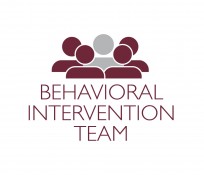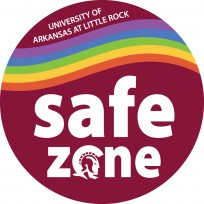Mission
Commitment to supporting educational opportunity as a pathway to personal success.
Summary Narrative
1) Enhance recruitment and retention efforts to increase enrollment
n/a
2) Strengthen student-friendly operations and customer service
n/a
3) Improve diversity and inclusion efforts to provide a safe and inclusive environment for students
n/a
4) Align financial and human resources to operate more effectively and efficiently
text
5) Promote student development, engagement, and leadership
n/a
6) Other – UA Little Rock Goal 4: UA Little Rock will serve as an active partner in the community.
TRIO Talent Search and Educational Opportunity Center (EOC) assist low-income, potential first-generation persons to complete secondary school, enroll in postsecondary education programs and achieve academic success leading to postsecondary attainment.
TRIO Talent Search and Educational Opportunity Center assisted non-traditional and underrepresented students and adults to complete secondary school and enroll in higher education (1,092 high school students persisted in secondary education, 664 persons completed secondary school, and 602 persons enrolled in postsecondary education programs.)
TRIO Talent Search and EOC worked with secondary schools and community agencies in Pulaski, Saline, Lonoke, and Jefferson Counties and provided participants with enhanced opportunities such as academic tutoring services, college placement assessments, and study skills to assist them in graduating from high school/GED prepared for post-secondary education. The Talent Search target middle schools are: LR Cloverdale, LR Henderson, Pine Bluff Morehead, No Little Rock, and Jacksonville/No. Pulaski. Target high schools are LR Central, LR Hall, LR JA Fair, LR McClellan, Jacksonville/No. Pulaski, No. Little Rock, and Pine Bluff Dollarway.
The EOC programs provided numerous services that developed educational aspirations and career pathways for local area adults. In sessions with clients, Education Specialists discussed types of postsecondary institutions, various majors and career options the clients are interested in. Some of the special populations served include Our House, Goodwill, LR Job Corps, Mamas Unidas, Veterans Day Treatment Center, NLR Housing Authority, BCD/Hoover, Arkansas Workforce Saline County, Saline County Adult Ed, City of Faith, Pulaski Co Housing Authority, Pine Bluff National Guard, Helena Anchor Mission Ministries, Pine Bluff Goodwill, Monticello Adult Ed, and Arkansas Dept. of Corrections Delta Reentry Program. A College Crash Course series provided opportunities for clients to meet with business and agency partners to learn about postsecondary and career options.
TRIO Talent Search and EOC provided services to facilitate enrollment for transfer students from two and four year colleges, particularly UA PTC. Through individual sessions, the TRIO staff assisted participants with postsecondary transfer decisions and options. Topics included loan default counseling, financial aid assistance, admission re-entry requirements, advising information for two-and four-year majors and careers, required transfer paperwork, transcript requests and referrals to institution transfer offices.
2018-2019 major services by number of participants are listed below.
| Major Service | Number of participants |
|---|---|
| Admissions assistance | 2470 |
| Scholarships, financial literacy | 1762 |
| FAFSA, financial aid | 1711 |
| Study skills | 1321 |
| College planning | 1039 |
| Campus tours | 865 |
| Career assistance | 770 |
| Tutoring | 703 |
| ACCUPLACER | 370 |
| Computer lab | 370 |
At A Glance
- 3,568 total participants
- 3,192 first-generation participants
- 223 veteran and military-connected participants
- 48,500 hours of service provided to participants
Assessment 1
Type of assessment (learning outcome or operational)
Student learning outcome
Activity or experience being assessed
School workshops regarding major financial literacy knowledge
Assessment artifacts
20-question survey
Time period assessment was done
The survey was given to ninety (90) 10th graders during classroom workshops at 3 target high schools.
Results
Student scores of the 20-question survey ranged from 2 to 18 correct with an average score of 12.4. No survey question was answered correctly 100% at any of the three target schools. The most-needed financial literacy improvement areas are credit, insurance, and banking.
Continuous improvement process
Survey results and correct answers were discussed with students and partner teachers during follow-up workshops at the schools.
A financial literacy handout for 10th-11th graders and their families will be created based on discovered knowledge gaps.
WHEN: Fall 2019
Stakeholder involvement / Communication plan
Results and the handout will be discussed among TRIO staff and partner teachers in the Fall, 2019 school visits.
Assessment 2
Type of assessment (learning outcome or operational)
Operational
Activity or experience being assessed
Fall 2018 postsecondary enrollment rate for partner-referred clients.
Assessment artifacts
Postsecondary enrollment verification reports, National Student Clearinghouse
Time period assessment was done
Fall 2018
Results
Eighty-five percent of partners produced postsecondary enrollment rates that met or exceeded the EOC postsecondary enrollment objective of 25% for college-ready participants. The EOC enrollment percentage for low-income, first-generation adults is established by the grant. The enrollment rate for individual partners ranged from 10% to 100%. Twenty-two partners exhibited a 100% enrollment rate.
Continuous improvement process
Implement a future-steps communication plan within one week following the first contact for clients at lower-performing partner agencies.
WHEN: 2019-20 program year
Stakeholder involvement / Communication plan
Results and additional contacts will be discussed among TRIO staff and partners in the 2019-2020 program year.
Assessment 3
Type of assessment (learning outcome or operational)
Operational
Activity or experience being assessed
Identification of community partners who produce the highest number of postsecondary enrollments, program year, 2017-2018.
Assessment artifacts
Educational Opportunity Center database
Time period assessment was done
2018 Fall semester
Results
Community agencies, high school seniors and walkins/referrals produced the highest number.
Continuous improvement process
Further review of services delivered to the enrolled clients will determine best practices for services to clients of the other partners. Best practices to implement with other partners include utilizing laptops at partner visits to facilitate timely application submissions, simplifying the follow-up communication letters, and shorter time lapse of follow-up telephone calls and emails.
WHEN: 2019-20 program year
Stakeholder involvement / Communication plan
Results will be discussed among TRIO staff and partners in the 2019-2020 program year.
Priorities for Next Year
- Secure additional office space in order to fill 3 new full-time positions
- Develop an education outreach center for hispanic/latinx residents
- Complete preliminary statistical analysis for grant continuation applications.

